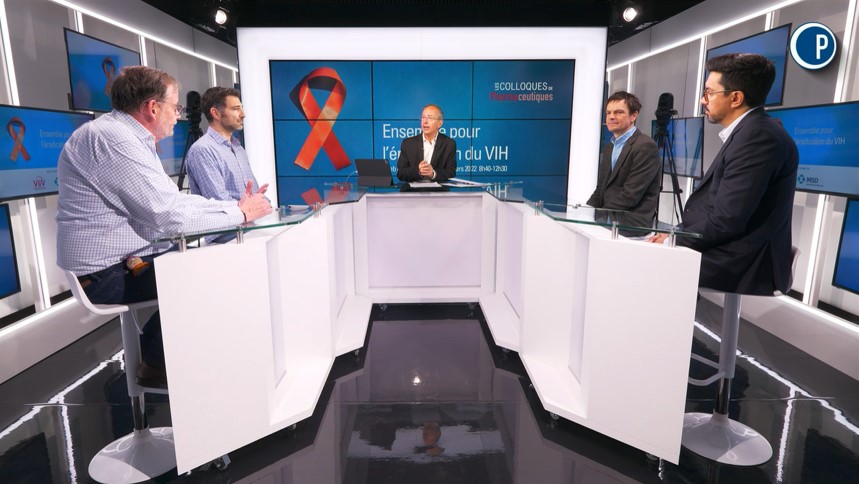After once-daily combinations, the future of HIV treatments is long-acting injectable therapies. With the promise of a better quality of life for patients, provided that we also act on the stigmatization of which infected people are still too often victims.
The first round table of the symposium “Together for the eradication of HIV”, organized on March 29 by Pharmaceuticals, opened with the pleasing observation of real therapeutic advances in patient care. Professor Jade Ghosn, infectious disease specialist at Bichat-Claude Bernard Hospital (AP-HP), points in particular to increasingly effective combinations of treatments. “Not only will the majority of patients have to take a maximum of one tablet per day, but the number of active molecules per tablet also decreases, thanks to dual therapies, with the corollary of reduced side effects”, he underlines. “The new therapies greatly reduce the deleterious psychiatric effects, such as depression, which greatly improves the quality of life”, confirms Dr. Martin Duracinsky, specialist in general medicine at the Bicêtre Hospital (AP-HP).
Space out the takes
“The desire is really to move towards a reduction in the number of intakes, in order to lighten the daily lives of patients”, explains Gabriel Martin, president of ViiV Healthcare France and Belgium. The trend today is to develop long-acting injectable therapies that can be administered every two months or more. Gabriel Martin even mentions the objective of a single annual administration. A real gain in quality of life, according to Professor Ghosn: “This approach reduces stigma, gives more freedom to patients, who no longer think about the disease every day… and that is not at the expense of efficiency against transmission. »
This message that an effective treatment, by reducing the viral load to an undetectable level, eliminates the risk of transmission of the virus, is still too little perceived in the general population, according to the speakers of the round table. However, it is this erroneous perception of the real risk of transmission which contributes to maintaining this extremely strong stigmatization with regard to infected persons. A stigma that also hampers the motivation to be screened, while screening and therefore early entry into treatment offer more chances of success. Professor Ghosn thus evokes the case of the patients of the Visconti cohort, some of whom, treated very quickly after their infection, experienced functional remission for several years after stopping therapy. “Why it works in some people and not in others is not yet understood, research is ongoing. »
Adapt the health system
All these new therapeutic advances will not necessarily be suitable for all patients, depending on the state of progress of their disease or resistance to treatment that may have arisen previously. “The main thing is that we can have a whole panoply at our disposal, to offer à la carte treatment,” insists Professor Ghosn. “With the simplification of intakes, the mental load decreases, and it is almost easier to be sick now than thirty years ago, testifies Eric Salat, HIV-positive for thirty years, expert patient and teaching coordinator at the University. of Patients (Sorbonne University). But for the “old” patients, the problem is more about comorbidities and other age-related diseases. However, the health system has not adapted to our needs at all”.
The same observation according to him for the care of new patients: “The authorities are pushing to get patients out of hospitals, while the care in town is catastrophic! “, he worries. The Covid-19 pandemic has however changed the doctor-patient relationship, notes Dr Duracinsky: “The health crisis has given us doctors an innovative look at how to take care of our patients: we have learned to work with different modalities, such as telemedicine”.
Julie Wierzbicki
–

/i/2004778134.png?f=meta)
